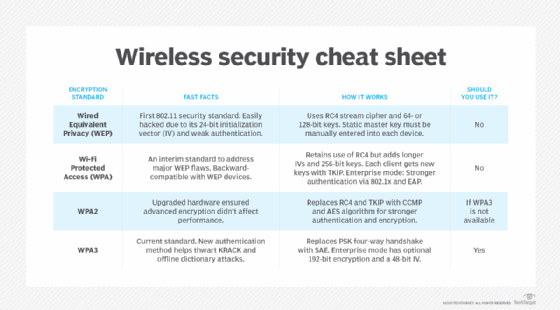

It’s designed for use with networks that don’t have network passwords while providing encryption communication. The 802.11 “open” authentication support has been replaced with Opportunistic Wireless Encryption (OWE).
WEP VS WPA 2 PASSWORD
WPA3’s handshake protocol forces real-time attacks, essentially eliminating dictionary attack techniques.įorward secrecy, used with WPA3, prevents an attacker from recording the encrypted transmission of a session and then decoding it in the future, should the wireless network password be obtained in some fashion. WPA2’s 4-way handshake was susceptible to offline dictionary-based attacks, especially when short passwords under 16 characters were employed. SAE, also known as Dragonfly Key Exchange, uses forward secrecy and is resistant to offline decryption attacks. SAE is a more secure protocol for handling the initial key exchange addressed with the KRACK. WPA3 uses the Simultaneous Authentication of Equals (SAE) to replace WPA2’s Pre-Shared Key (PSK) exchange protocol. The 128-bit AES encryption employed with WPA2 is still in effect with WPA3, but the enterprise version requires 192-bit AES support. WPA3 makes it mandatory to use Protected Management Frames (PMF), whereas the PMF was a late addition and optional for WPA2.

Like WPA2, it includes WPA3-Personal and WPA3-Enterprise versions.


 0 kommentar(er)
0 kommentar(er)
